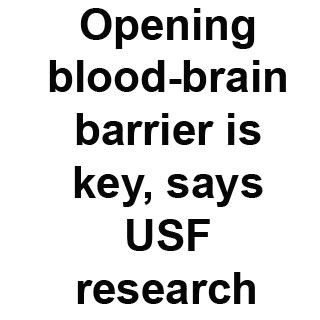
Researchers reveal that mannitol may open the blood-brain barrier if the blood cells pass through it to the site of injury. There is a supportive treatment but no cure for cerebral palsy. Cerebral palsy is a group of neurological disorders. This is mainly caused by brain damage before birth or during infancy. It is characterized by impaired muscle coordination.
“The combination of mannitol and human umbilical cord blood treatment increased central nervous system levels of at least three neurotrophic factors — glial cell line-derived neurotrophic factor, nerve growth factor and brain-derived neurotrophic factor,†said Dr. Cesar Borlongan, the study’s lead author and a professor in the USF College of Medicine’s Department of Neurosurgery and Brain Repair.
According to Dr. Borlongan and his co-authors the survival of human umbilical cord blood (HUCB) grafts is not increased by the mannitol treatment. But by raising the trophic factors, HUBC bonded with mannitol may mediate powerful functional improvement.
“Intravenous delivery of human umbilical cord blood alone promoted behavioral recovery in neonatal animal models of cerebral palsy, but their functional improvement was more pronounced when human umbilical cord blood transplantation was combined with mannitol,†commented Dr. Borlongan. “Our results indicate a pivotal role played by mannitol permeabilization of the blood-brain barrier,†Dr. Borlongan explained.
He observed that there was a variety of post-treatment movement tests carried out on lab animals. The most improvement was demonstrated by those receiving the combination treatment instead of HUCB alone or mannitol alone.
Since the neonatal research animals received a combination of HUCB cells and mannitol imparted up-regulation. This is observed to be the most tough neurotrophic factor. The research advices that immature blood-brain barrier needs to be passed through in order to facilitate entry by HUCB and promote effects of trophic factors shares Dr. Borlongan.
It is identified that young animals display immature and not fully developed blood-brain barriers. It was revealed by the researchers that managing immature barrier is required to gain improved access of therapeutic substances. This is from peripheral circulation to the brain.
“Also, the therapeutic effects were achieved without immunosuppression, which is often accompanied by harmful side effects,†said Dr. Borlongan. “Our present findings extend the usefulness of blood-brain barrier permeabilization in facilitating cell therapy for treating neonatal brain injury and potentially cerebral palsyâ€.
According to the research conducted earlier it was observed that in order to rescue the injured brain in adult stroke modeled animals cells do not need to cross the blood-brain barrier. In the earlier study mannitol helped stimulate the entry of growth factors. These growth factors were secreted by the grafted cells.
The research findings were recently published online in the Journal of Cellular and Molecular Medicine
